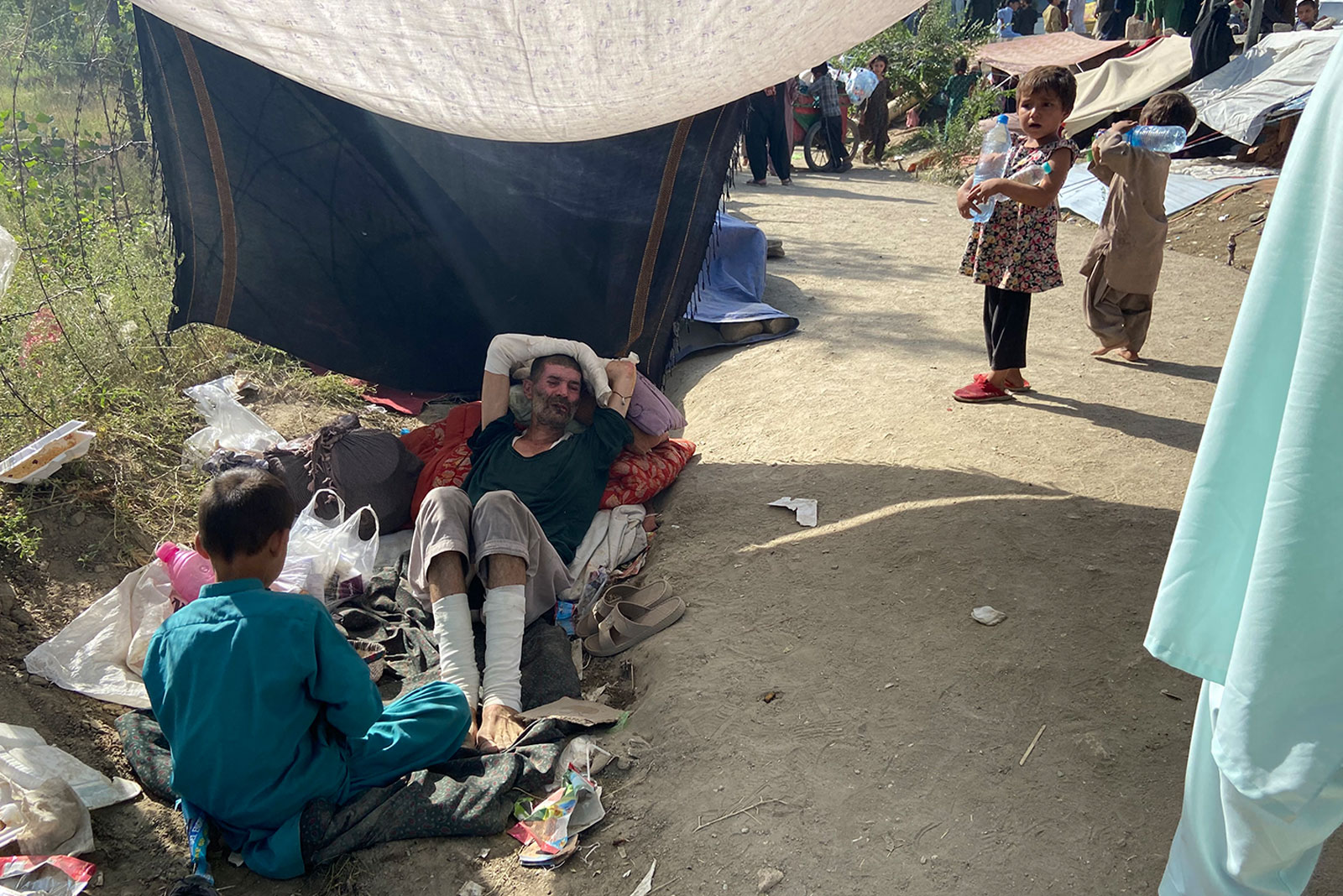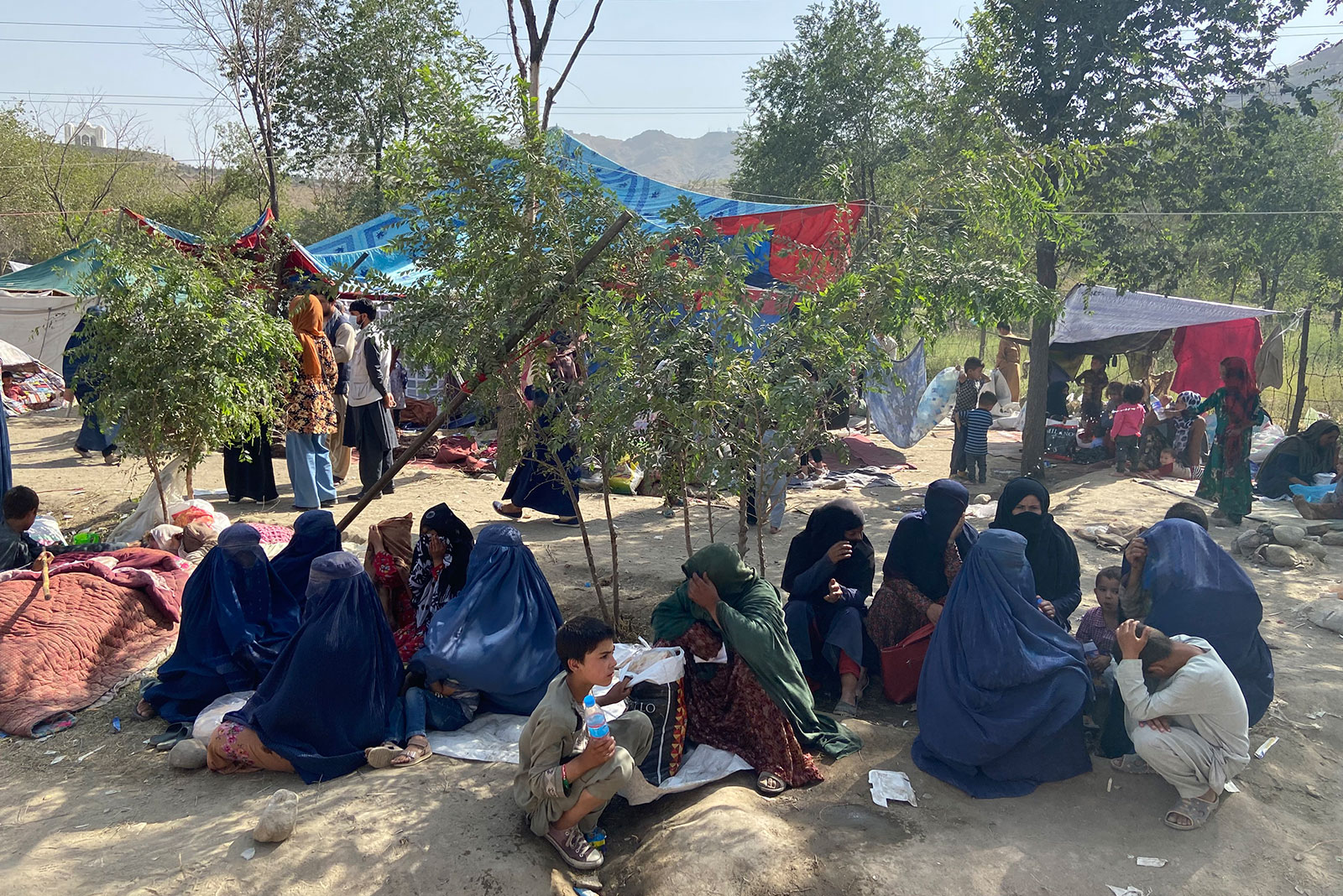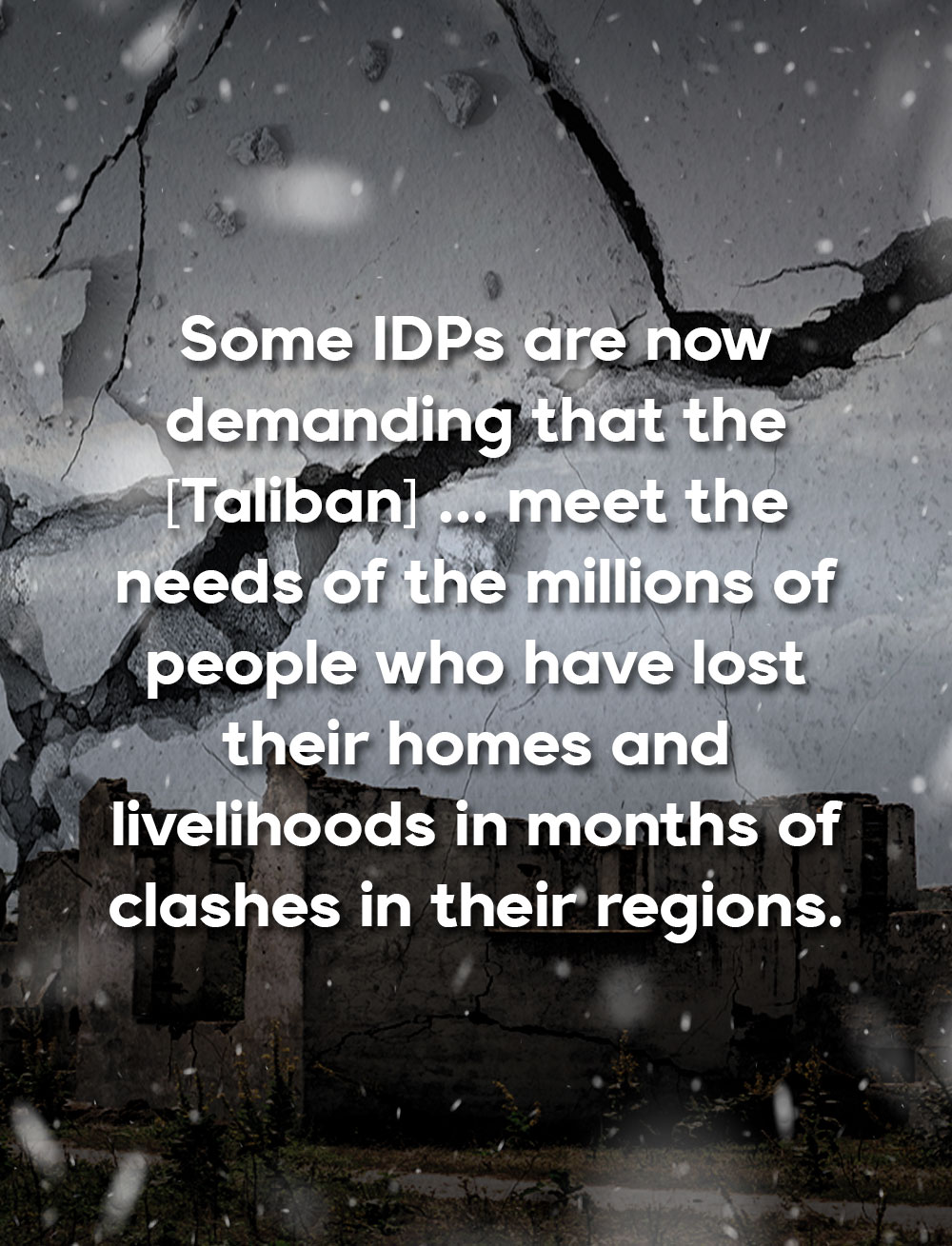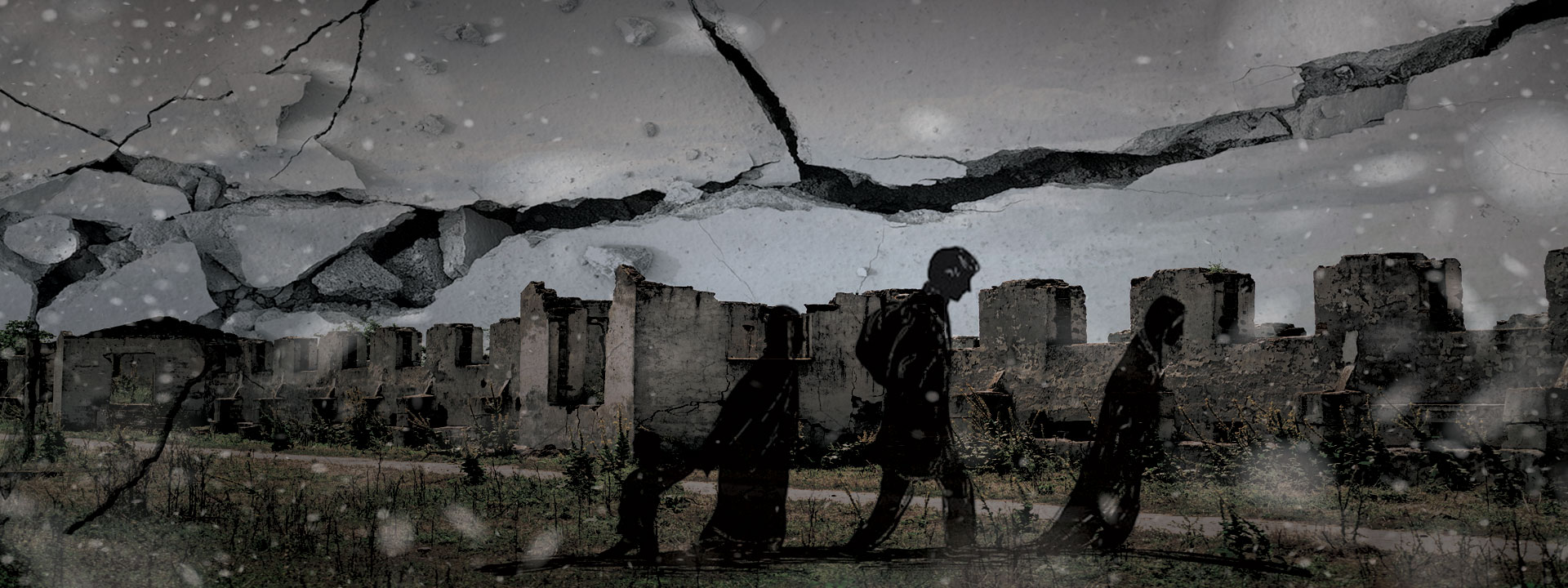Even before the Taliban declared its comeback to power in Afghanistan, the country was already hard-pressed over how to deal with its growing number of internally displaced persons or IDPs. But the pullout in mid-August of foreign organizations providing food and supplies to these people has put even more pressure on the Taliban-led interim government not only to help IDPs feed themselves but also to either get them back to their homes or resettle them.
In a recent visit to Afghanistan, UN High Commissioner for Refugees Filippo Grandi noted the deplorable condition of Afghan people in general and called the situation “desperate.” For sure, though, the conditions endured by the country’s more than 3.5 million IDPs — driven from their homes by conflict and by drought — are much worse than that.
Grandi warned during his three-day visit in September: “If public services and the economy collapse, we will see even greater suffering, instability, and displacement both within and outside the country.”
Thousands of Afghan families had fled their homes in the last several months and many remain stranded in Kabul and other big cities across the country. By the count of the UN Office for the Coordination of Humanitarian Affairs (OCHA), nearly 700,000 Afghans were forced to leave their homes between January 1 and September 22 of this year alone. There are those who have made their way back after the Taliban’s takeover of Kabul in mid-August, but many other families say that they simply have no home to which they can return.
“The Taliban entered my house and asked me to leave when the fighting was going on between them and the army,” says 66-year-old Sher Ali Ramzan from Kunduz province, some 336 kilometers north of Kabul, and who wound up in the national capital. “ Just then, a rocket from the government airstrike hit my house and destroyed it. Even though the fighting is over now, I don’t have a house anymore.”
“I came with nothing but clothes on my back,” says Farzana, a homemaker also from Kunduz, who is now living in one of the many makeshift camps in Kabul. “We are more than 20 people living in the same tent. We don’t have any money or clothes to wear. They ruined my house and now I don’t know where to go.”

Sher Ali Ramzan, 66, traveled over 300 kilometers with his family to Kabul to escape the clashes between the Taliban and the army. An airstrike destroyed their home and now they have nothing to go back to. (Photo by Kanika Gupta)
Several other IDPs who tried to return home are now back living in public parks in the cities as well, after failing to find work in their hometowns. Recent fighting between the National Resistance Front (made up of anti-Taliban militia and former Afghan security forces) and the Taliban in Panjshir valley, 80 kilometers north of Kabul, has also made hundreds of its residents there into IDPs, with many of them now also in the capital.
A woman who arrived in Kabul from Panjshir recently claims that there is a shortage of food, medicines, and tents at the makeshift IDP camps. People worry that their situation will get worse if they are not provided with adequate supplies soon.
Dependent on aid
More than 18 million people out of Afghanistan’s population of 40 million had been dependent on aid even before the Taliban completed its takeover of the country in August. These days, though, many domestic and international aid organizations have stopped work in Afghanistan. Projects supported by institutions like the World Bank have also been suspended.
There are still a few aid organizations that continue to provide assistance in the face of uncertainty, but not without challenges.
“We are not able to access IDPs in provinces where the Taliban does not allow female staff to operate,” says Jared Rowell, country director in Afghanistan of the Danish Refugee Council (DRC). “DRC will not work in locations where female staff are prevented from working. Additionally, with banks still not fully operational, we are limited in our ability to provide direct services, although we have the capacity to assess their needs so that we can respond in the near future once the bank system is functioning normally again.”

Displaced women and children have nothing but the clothes on their backs and now face an uncertain future. Many aid organizations that used to help the displaced have suspended operations. (Photo by Kanika Gupta)
Just when that will happen is still up in the air, with the international community yet to officially recognize the Taliban as the party in power in Afghanistan, with the right to form a national government. And while the Taliban has already formed an interim government, it has yet to spell out how it plans to deal with aid organizations that can help it secure adequate food, healthcare, education, and other basic needs and services for the Afghan people.
Indeed, some IDPs seem to have overcome their fear of the Taliban and are now demanding that the militant group’s newly formed government step up and meet the needs of the millions of people who have lost their homes as well as livelihoods in months of clashes in their regions.
UN agencies, for their part, have been scrambling to make sense of what is happening and what they can do to help the Afghan people.
Following his brief visit to Kabul, Grandi asserted, “The international community must … engage with Afghanistan — and quickly — in order to prevent a much bigger humanitarian crisis that will have not only regional but global implications.”
In a recent meeting of the United Nations High Commissioner for Refugees in Geneva, UN Secretary-General Antonio Guterres pointed out, “It is impossible to provide humanitarian assistance inside Afghanistan without engaging with the de facto authorities of the country.”
At the same time, however, he noted that humanitarian aid alone will not solve Afghanistan’s problem if the country’s economy collapses.

Pledges and pleas
At the Geneva conference, which was attended by top UN officials, as well as representatives of aid organizations and more than 100 member states, the UN made an appeal to the international community for global support for Afghanistan. The result was announced by Guterres: “Today, we have already heard clearly more than US$1 billion in pledges… It represents a quantum leap in relation to the financial commitment of the international community toward the Afghan people.”
Guterres also mentioned a written communiqué by the Taliban that appealed for international support and promised to respect and offer security to the aid workers. He added, “There is a clear interest of the Taliban also to engage with the international community and I think this is what gives also the international community some leverage.”
Still, because no one expects a kinder, gentler Taliban even this time around, wariness has marked engagements by the international community with the militant group. That caution may mean very slow response to the clamor for help by the Afghan people.
Fortunately for some IDPs, their relatives have given them temporary shelter. One woman who says that she works as a housekeeper for an international NGO relates, “I have an income of AFN 30,000 (approximately US$350). I am hosting 17 people in my house, including my own family. I have to spend AFN 1,000 (US$11.69) per day to feed everyone. It is too expensive, but I feel happy because I have my own hut and that I am able to give these people shelter as well as safety.”
Given the country’s worsening economic crunch, however, such goodwill may not last long.
As temperatures start to drop in Afghanistan, many IDPs are still waiting for aid out in the open. Says 43-year-old Khair Mohammed, an IDP from Sheberghan, Jawzjan, in the country’s northwest: “We need a lot of things, but only get food and water. The first priority is to get a tent because we don’t have shelter. Neither do we have any money to rent a place.”
“We don’t know when we can go back home,” he rues. ●
Kanika Gupta is a multimedia journalist based in New Delhi, India, and works out of Kashmir and Afghanistan. She reports on culture and human interest stories from conflict regions.



















